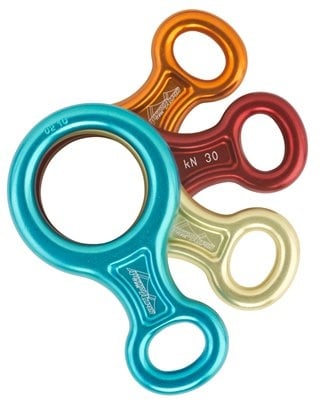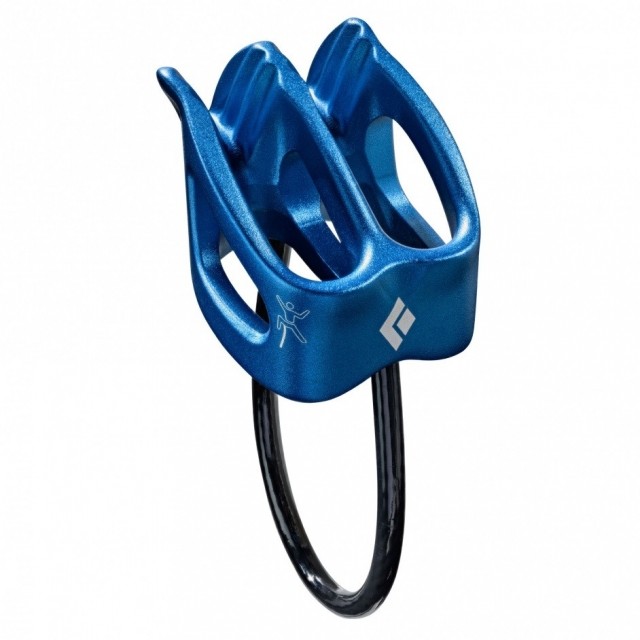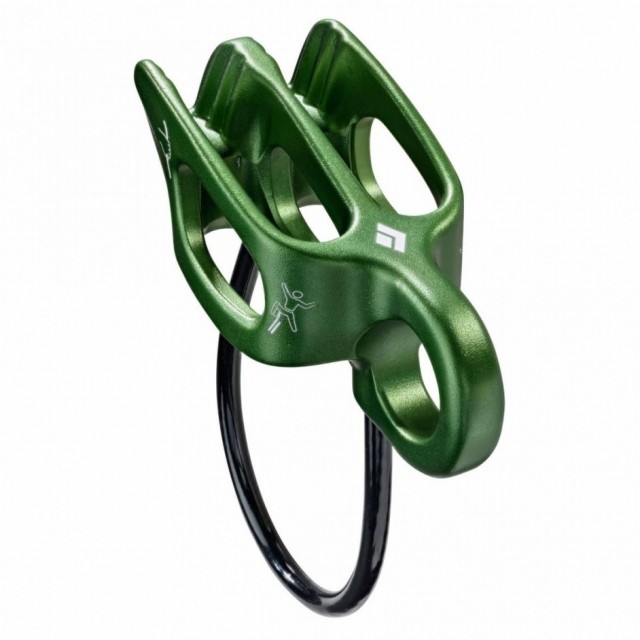How do you choose the right belay device?
Climbing without a belay device is almost unthinkable. A belay device is therefore an essential part of your (climbing) equipment, but how do you choose it? With the help of this description we help you to choose a suitable belay device for your (climbing) activities.
Before you read this article, it is good to ask yourself a few things, namely:
- Where do you climb the most?
Do you mainly climb a lot in the climbing hall or do you practice lead climbing, canyoning or caving outside? Where you climb affects the minimum functions your belay device should have. - Which climbing ropes do you use?
This is usually related to where you climb the most, but it is still good to think about this. The thickness of the climbing rope you use limits your selection of belay devices available. Also think carefully about ropes in a climbing gym, because they are often a bit older, you can add a few millimeters to the thickness. Some semi-automatic belay devices therefore do not work well in the climbing hall. We will elaborate on this later.
View our range of belay devices.
Also check out the self-locking belay device.
Type of belay devices
There are three or four different types of belay devices, depending on whether you place cliches and tuber(like) belay devices in a category or separately.
Figure 8 devices

Figure 8 devices is a classic belay device which has historically been extremely popular, but has since been superseded by the other types of belay devices. Correct use of the climbing rope is easy to visually check, but requires a lot of attention from the belayer. The braking function is completely lost if the belayer does not use the device correctly or releases the climbing rope. I therefore absolutely advise against this belay device for the novice climber.
Benefits:
- Simple rope release for lead climbing
- Suitable for almost any rope diameter
- Can also be used for abseiling
Cons:
- Using the climbing rope causes your climbing rope to curl up
- Does not automatically block in the event of a fall, making it very unsafe for the inexperienced climber
- Offers relatively little friction, so belaying a heavy person requires more force than other belay devices
Tuber(like) belay devices
Today one of the most common type of belay devices is the tuber-like, also called tubers. Tubers offer extra friction of their own accord because the climbing rope runs bent through the friction plate of the tuber via a carabiner. Just like with a climbing climb, you also have to pay a lot of attention when using tubers to perform the correct securing actions. If you let go of the climbing rope, the tuber loses all braking effect and this can be very wrong for the climber.
You can still subdivide tubers into two types based on the functionalities. See below the examples of the functionalities that the two types of tubers have:
Black Diamond ATC XP:

As you can see in the picture, this is the most basic variant of a tuber. The functionalities that belong to this belay device are:
- Top-rope belay
- Securing the lead climber
- Abseiling on single, double & twin rope
Another example of this type of belay device is the Petzl Verso.

This is an extended version of a tuber. The extra functionality that comes with this belay device on top of the normal functionalities of a tuber is the possibility to belay one or two post climbers at the same time.
Another example of this type of belay device is the Petzl Reverso,
Benefits:
- Friction plate helps to brake the climbing rope
- Very versatile
- Offers the possibility to secure two post climbers with a tuber
- Abseiling on single, double and twin rope
Cons:
- Does not automatically block in the event of a fall, so a tuber is still very error-prone
- With thinner climbing rope, the friction is less. We do not recommend using the tuber in these cases for inexperienced climbers
- If you use very thin twin rope, the choice of tubers is quite limited
Semi-automatic Belay Devices (without braking assistance)
Semi-automatic belay devices without braking assistance are among the safest belay devices available to both novice and experienced climbers. The extra safe operation is due to the automatic locking of the belay device in the event of a fall, provided the braking hand is held in the correct position (hence the lack of braking assistance). The effect is still most similar to the effect of the tuber and the usability for climbing activities is also almost the same.
Many different models of these belay devices are available and we strongly recommend this type for novice climbers in addition to the semi-automatic belay devices with braking assistance.
The most important examples of this type of belay device that are ideally suited for the climbing gym are the Black Diamond ATC-Pilot, the Mammut Smart 2.0 and the Edelrid Jul.
Options that you can use better for outdoors due to the extra functionalities are the Edelrid Megajul, the Mammut Smart Alpine and the Climbing Technology Alpine-Up kit. Also take a look at the Edelrid Microjul, which is one of the few semi-automatic belay devices that is suitable for very thin climbing rope.
Benefits:
- Automatically blocks in the event of a fall if the brake hand is held in the correct position positie
- Simple design makes correct use easy to control
- Very versatile
Cons
- The correct operation of this type of belay device still depends on the position of the brake hand
- Smooth rope release when lead climbing or abseiling requires some getting used to the belay device
Semi-automatic Belay Devices (with brake assist)
Semi-automatic belay devices with braking assistance are without a doubt the safest belay devices for climbing. The belay devices are designed in such a way that even when you have your hands free of the climbing rope, the belay device will still automatically lock in the event of a fall (a warning here is that you should not let go of the climbing rope completely under any circumstances).
The automatic blocking is achieved by a brake pad in the belay device that tilts and blocks the climbing rope when subjected to a lot of tension. Spending climbing rope with this belay device often requires some practice to prevent the belay device from blocking unnecessarily.
An additional functionality that some of these belay devices have is an anti-panic function. This prevents the belay device from completely unblocking when the descent lever is opened too far (in the event of panic, for example). Take a look at the Petzl GriGri+ as an example.
You mainly use this type of belay device when climbing in the climbing hall or when leading a single length of rope outdoors. In addition, with this type of belay device you can also abseil on a single rope.
Benefits:
- Helps make climbing a lot safer
- Automatically blocks in the event of a fall regardless of the position of the hands
- The anti-panic function on some models prevents you from accidentally unblocking the belay device completely in case of panic
- Easy in use
Cons:
- Only suitable for single rope
- Higher price (obviously, safety shouldn't have a price)
- Relatively heavy
Advice for the novice outdoor athlete
Because there is a huge range of belay devices, here is my advice to the novice outdoor athlete.
If you are just starting out with outdoor sports, we recommend that you invest in a semi-automatic belay device. Preferably with braking assistance such as the Petzl GriGri+. If the Petzl GriGri Plus is too expensive, take a look at the Petzl GriGri or the belay devices without brake assistance.
The purpose of semi-automatic belay devices is to make climbing safer for you and, indirectly, to make climbing more enjoyable. If you have any doubts about the belay devices, feel free to visit CanyonZone in our showroom where we can advise you at the same time.
Based on source edited: https://www.klimwinkel.nl/keuzehulp/hardware/keuzehulp-hoe-kies-je-het-beste-zekermachine
Overview Knowledge base General canyoning and caving equipment : Go back.


